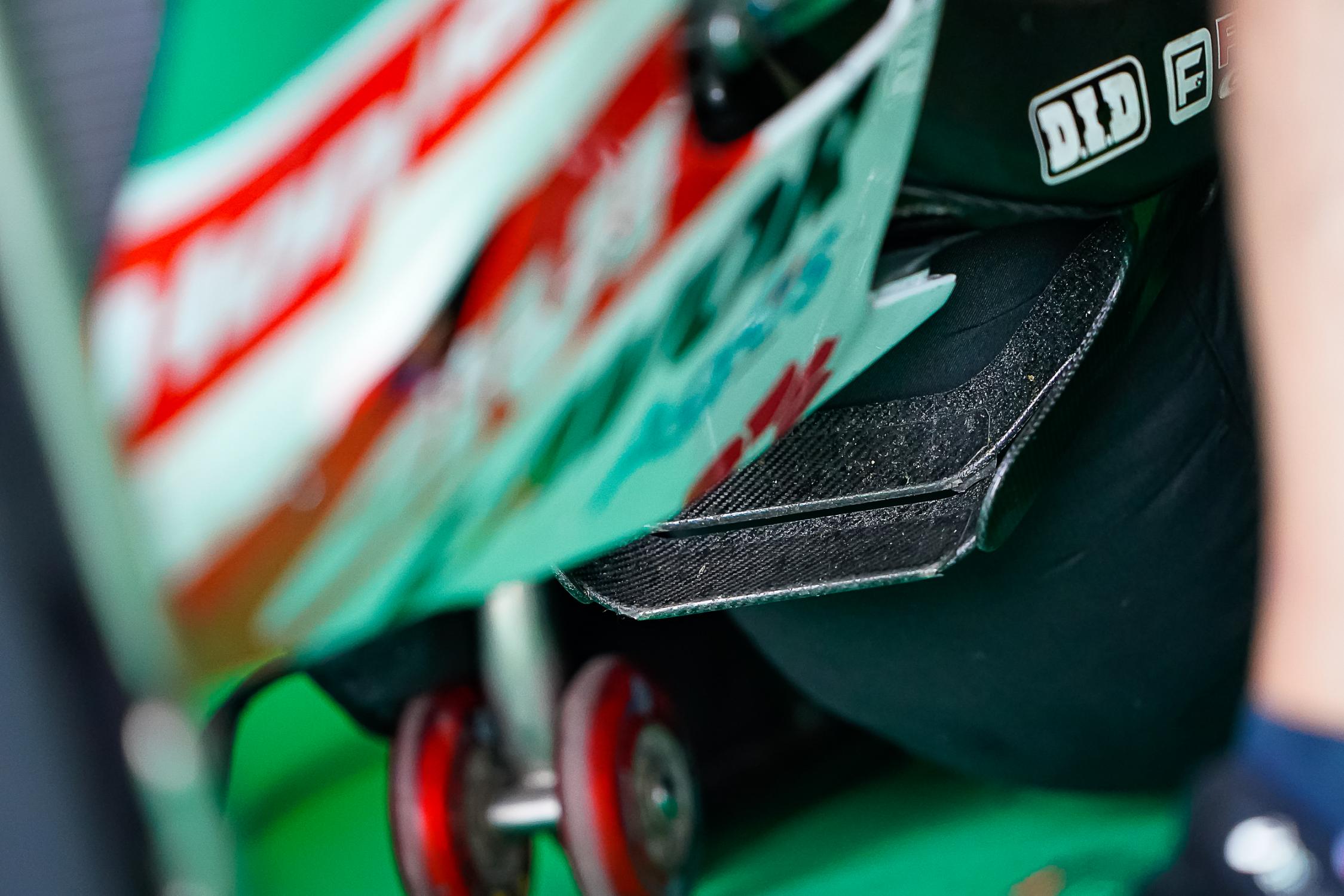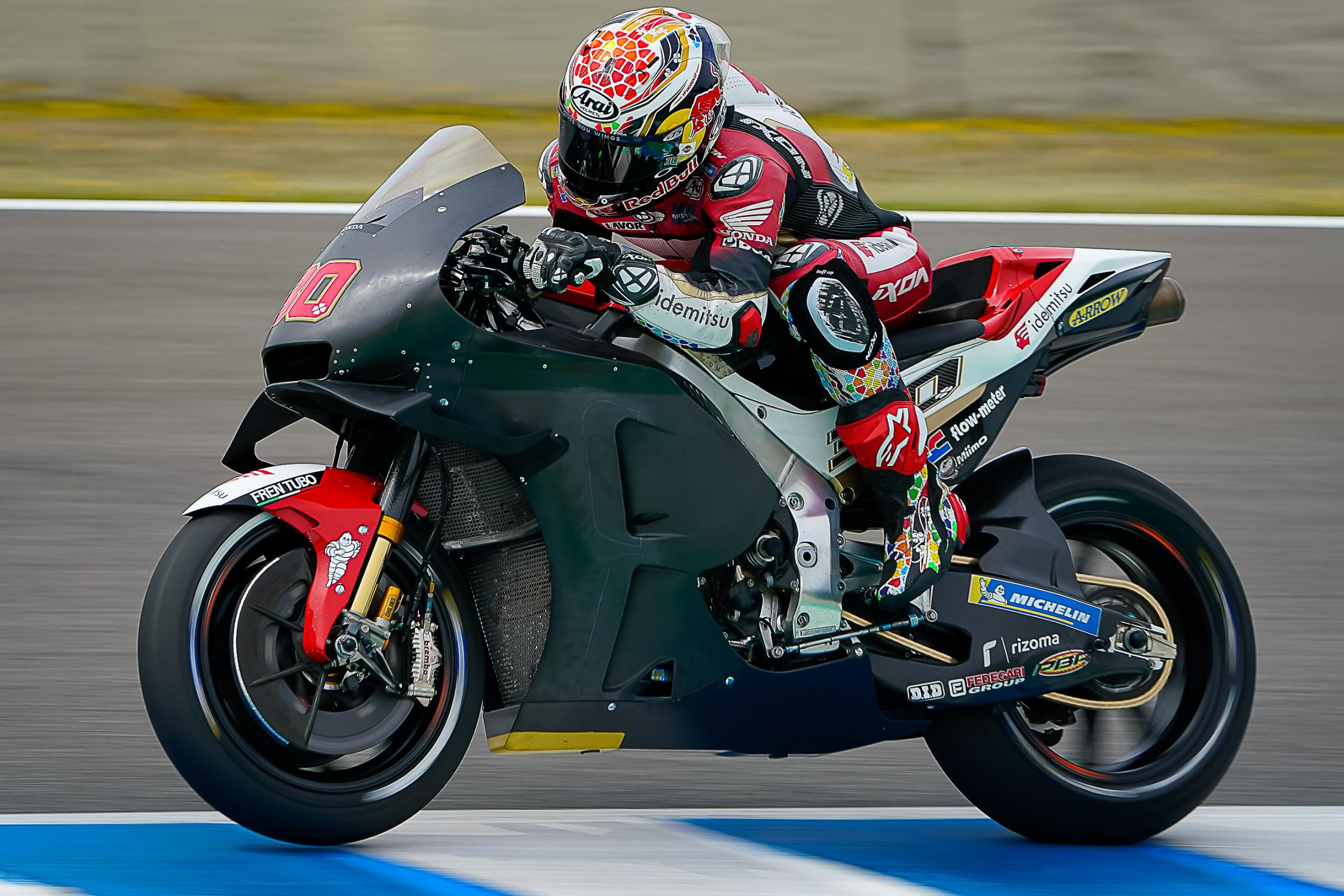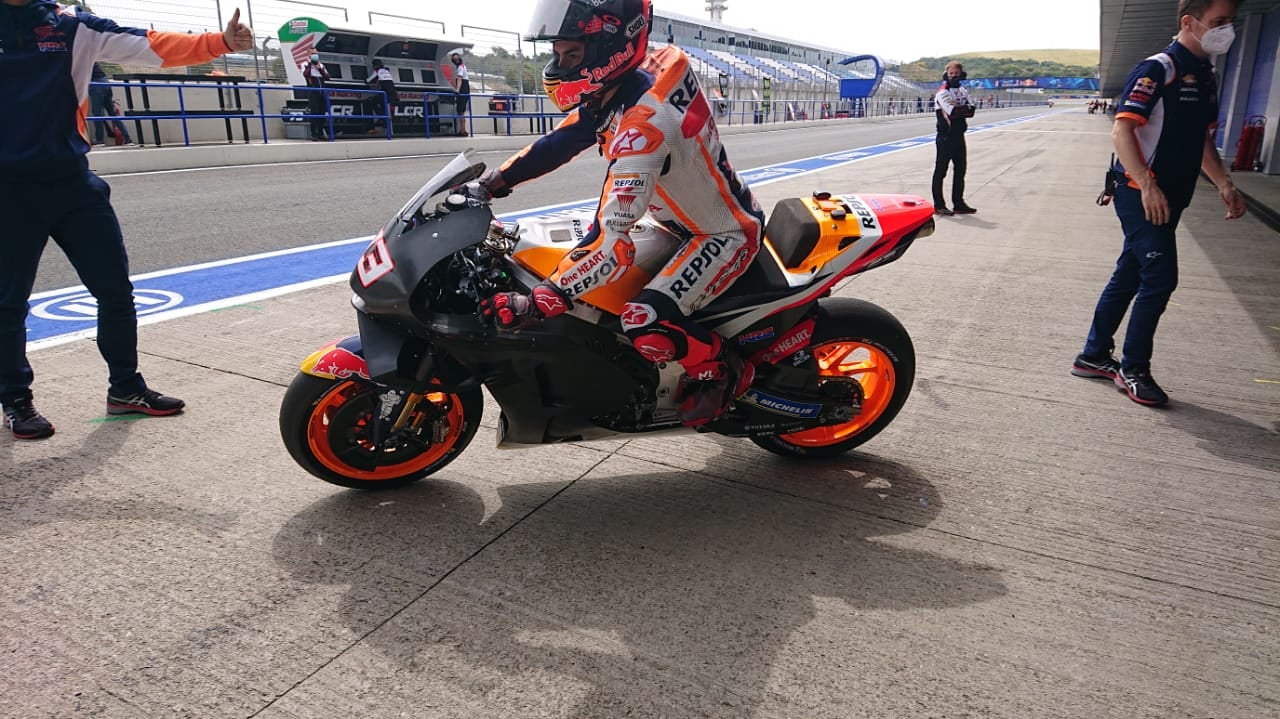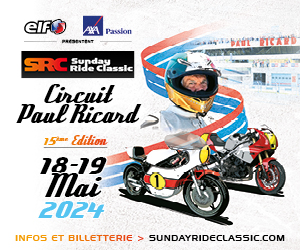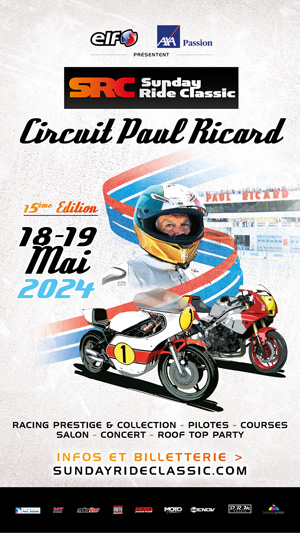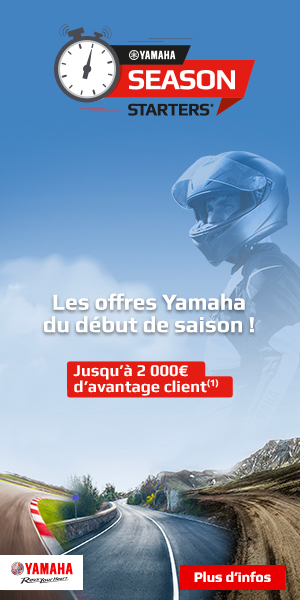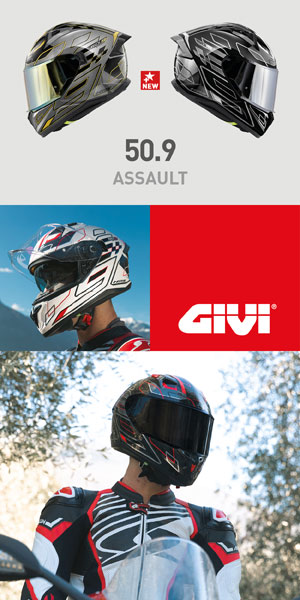The first in-season test of 2021 was a positive experience for Pol Espargaro, providing a clear direction to follow in the setup for the races to come. The HRC teams were testing three different aerodynamic packages, and Stefan Bradl had a bike in his pit box yesterday morning that looked a little different from the rest.
After the Spanish Grand Prix which took place this weekend on the Jerez circuit, the teams in the MotoGP category remained this Monday on the Andalusian track for the first day of official testing during the 2021 season.
Pol Espargaro completed no less than 89 laps, recording a best time of 1'37.506. Apart from 2 small, minor falls, the Spanish driver finished the test with a very positive feeling after a productive day on the track.
Marc Marquez completed seven laps in two runs before ending his test, during which he tried an aerodynamic package very similar to that of the Yamaha, with wings placed lower. After a physically demanding weekend, Marc Marquez chose to focus on his recovery and leave as much time as possible to prepare for the French GP.
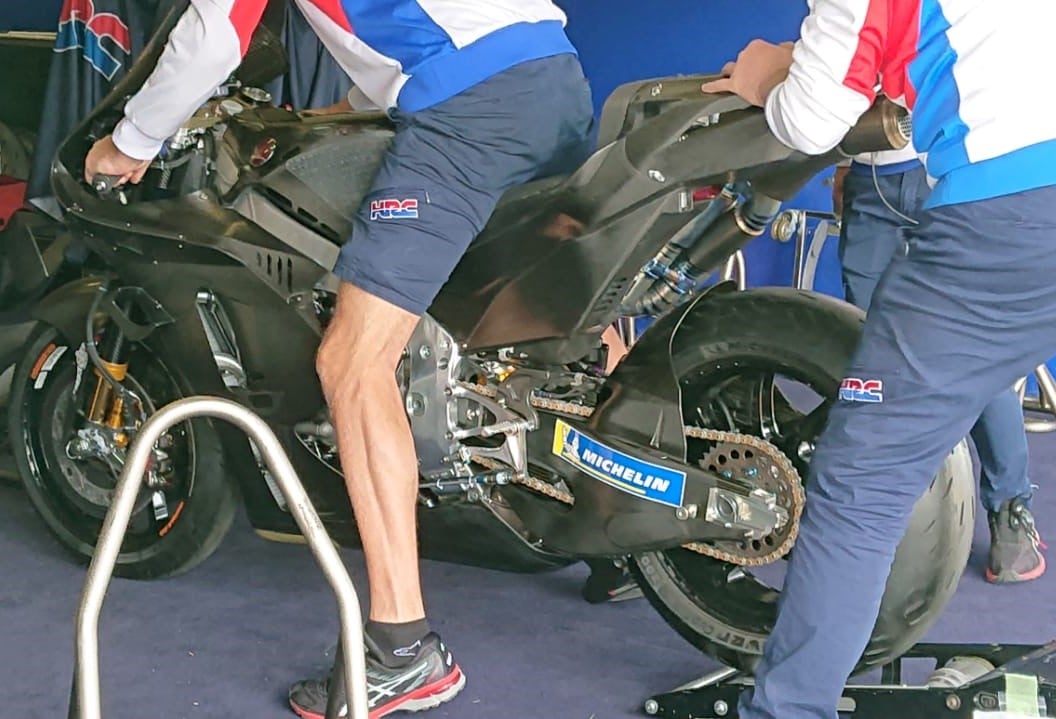
This prototype was present in Stefan Bradl's box this morning, it looks quite similar to what Honda is using this year, but looking closer, there are some technical developments. The first is that on the main chassis beam, there doesn't seem to be any carbon. However, we can't see the part that is behind the mechanic's leg, so there may be carbon hidden behind it, but even if there is, that area is much smaller than on the 2021 chassis.
This is a major difference compared to the chassis we saw on track this season. The 2021 chassis has this large area of carbon on the main beam. As for the 2020 chassis, the one that Takaaki Nakagami used during the race in Jerez and which allowed him to finish in 4th place, it has carbon at the top of the main beam.
Furthermore, it seems that this prototype has the older and larger diameter exhaust tip, which was a feature of the RC213V at the start of the 2020 season. HRC engineers are therefore also working on the power delivered by the engine.
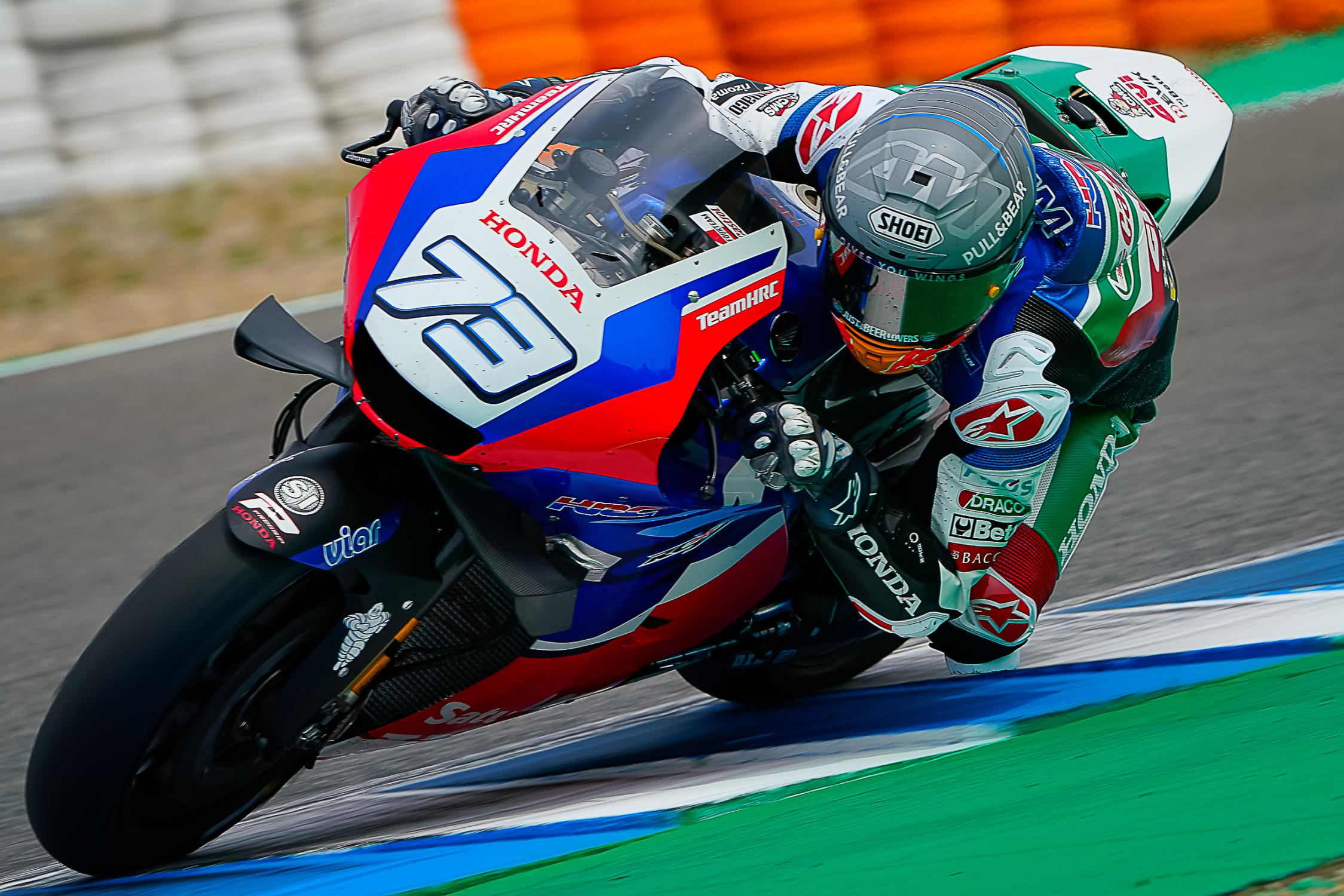
Here is one of the aerodynamic packages that was tested this Monday. We've seen this one a few times so far and it seems that once again Honda wants to use it.
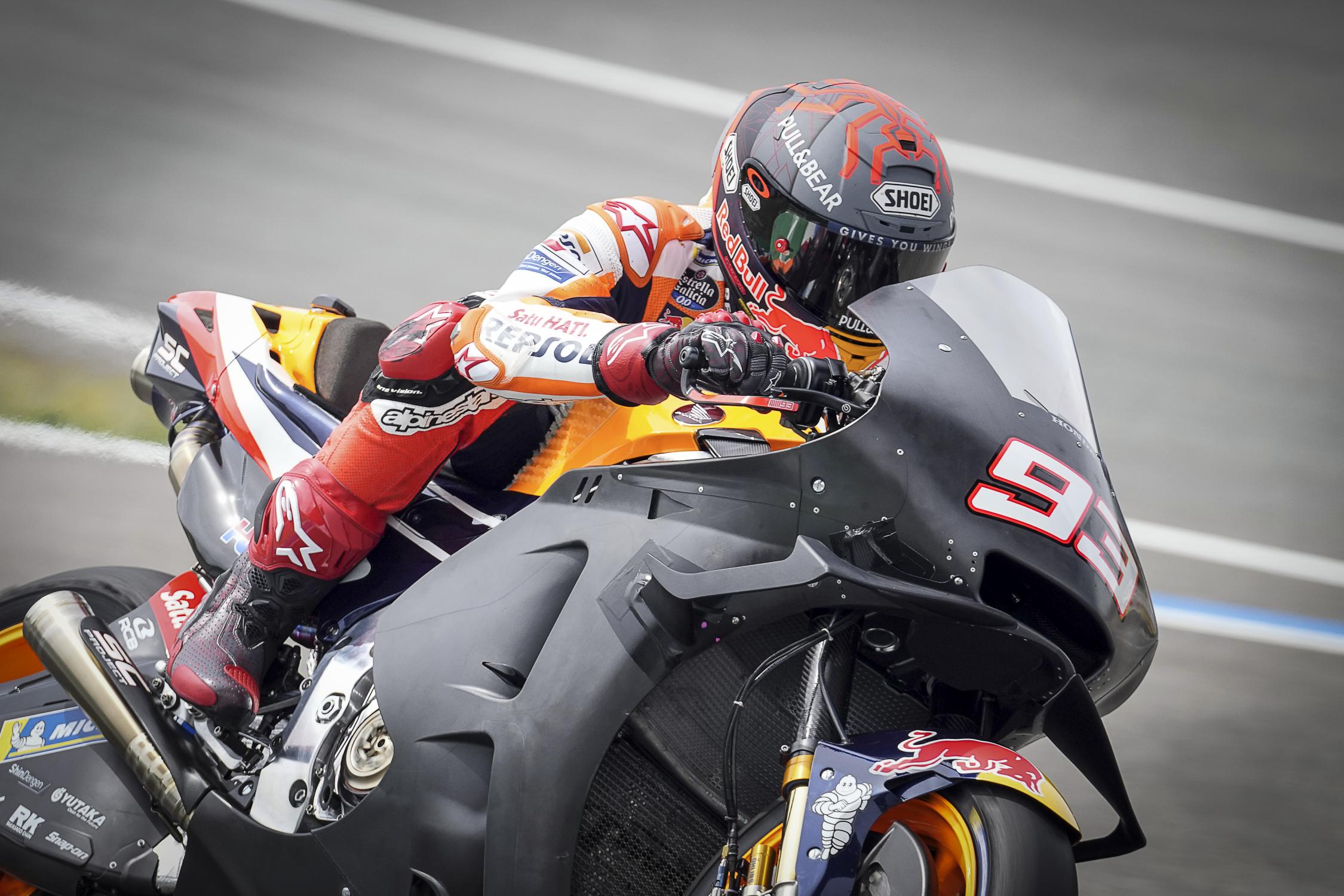
Here is the second aerodynamic package tested this Monday on the Jerez track. It is very similar to the previous one but it seems that the upper element has a much larger surface area.
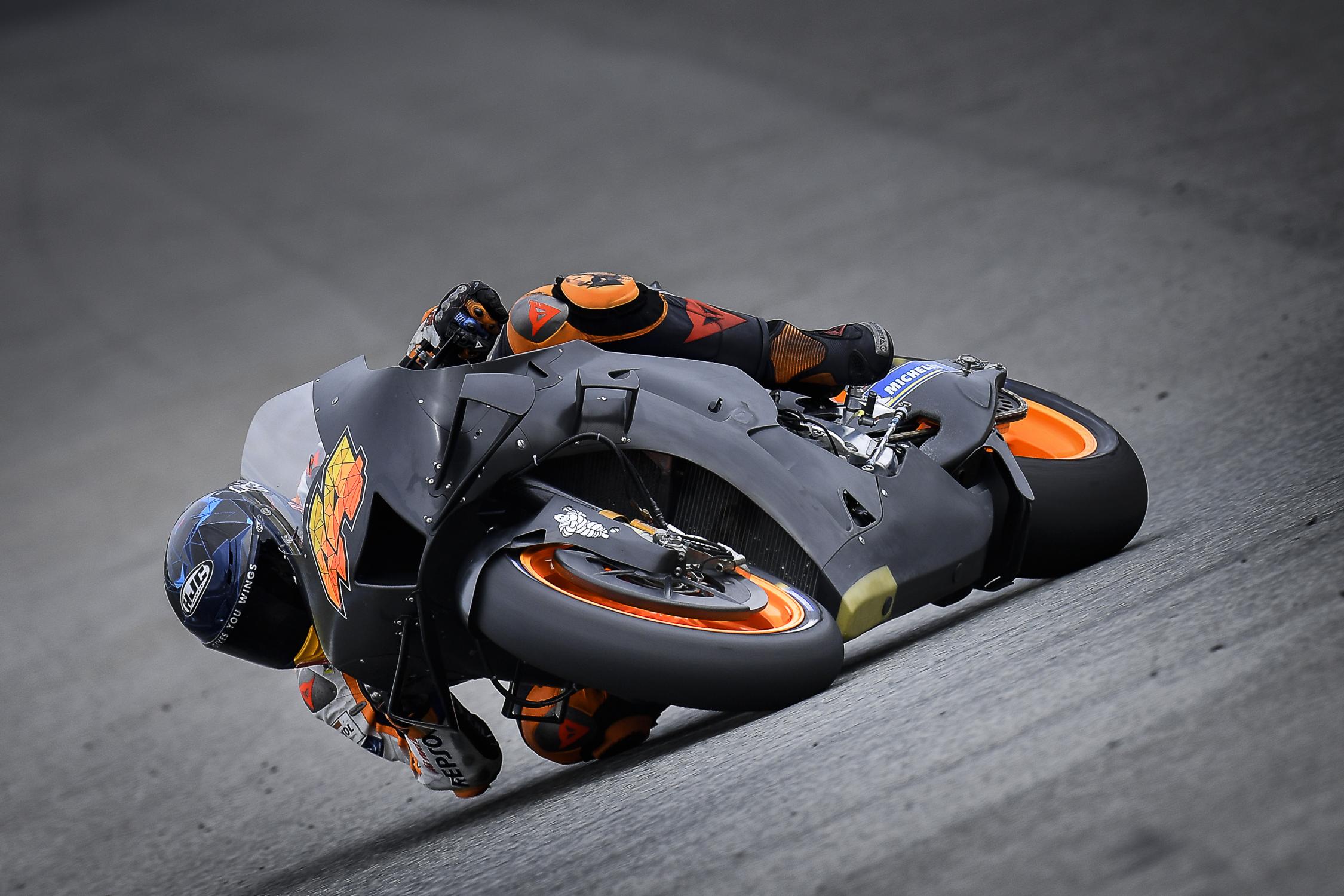
This is also the one that Pol Espargaro used for most of the day, but with an air intake having a different shape than the one we are used to seeing on Hondas, much more open and vertical . Once again, HRC engineering teams seem to want to change the way power is delivered by the engine. The reason is quite simple: changing the air intake changes the way the airbox is filled, and changes the behavior of the engine.
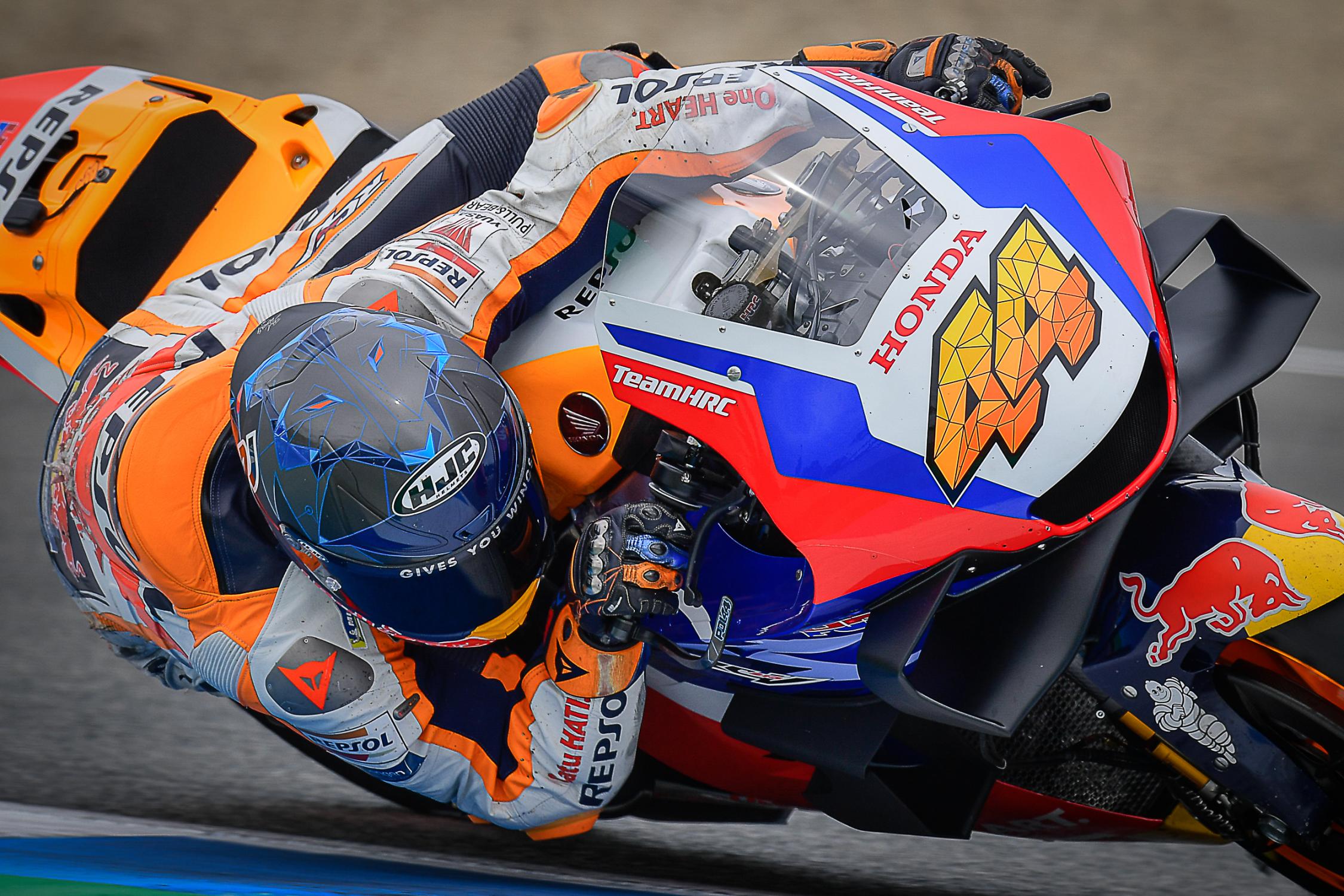
The third is undoubtedly the most radical. It is the largest and features a prominent upper fin, as well as secondary fins lower down the side of the fairing.
We've seen this one before, at the Qatar test. Stefan Bradl used it alongside a new version of the spoon, much larger. It remains to be seen which one will be adopted by the drivers in subsequent races. In theory, Honda could decide to introduce the new fairing with the larger air intake (and Yamaha-style fins) this year. But it's possible that this is part of testing of a 2022 engine, which would include a redesigned air intake. It's also worth noting that the new air intake was tested with the existing aero package, rather than the Yamaha-style fins. In order to know what is beneficial or not during testing days, it is interesting, if possible, not to modify more than one variable at a time.
